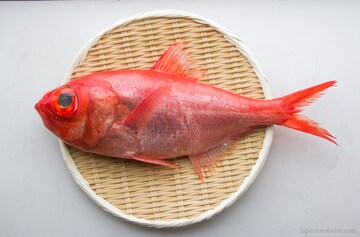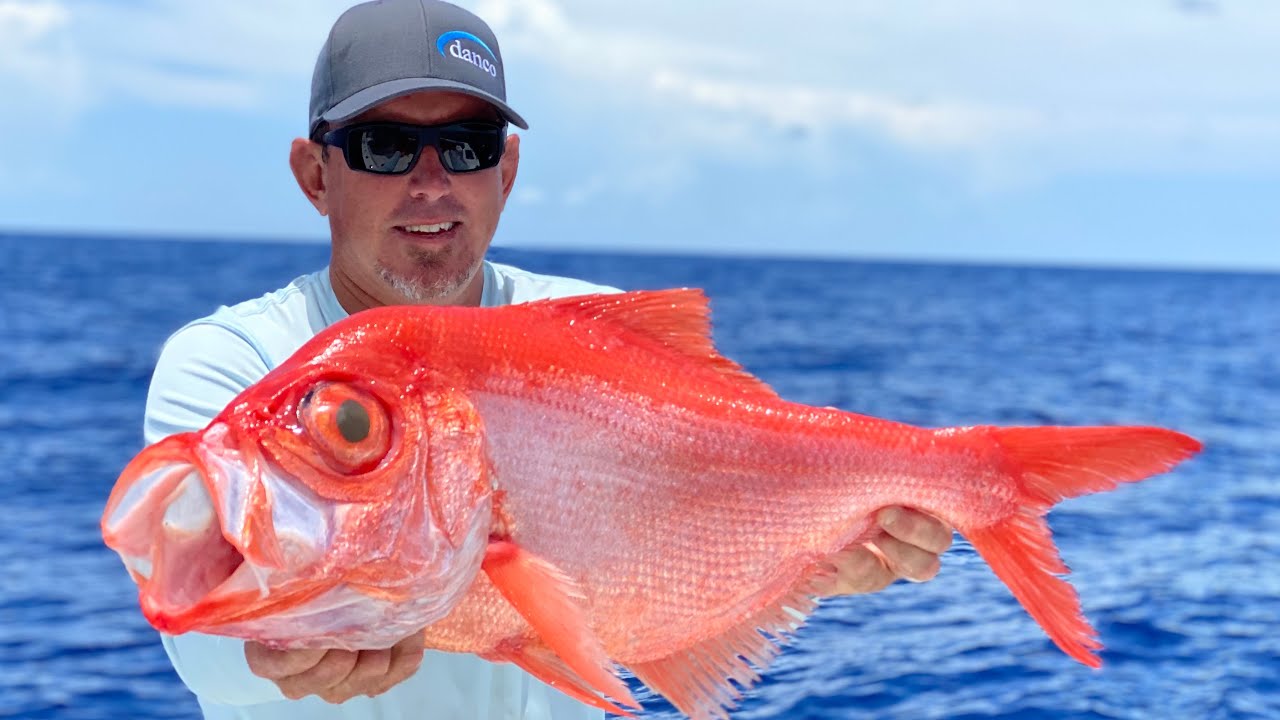The alfonsino (Beryx decadactylus), also known as the alfonsin, long finned beryx, red bream, or imperador, is a species of deepwater berycid fish of the order Beryciformes. It can be found in temperate and subtropical ocean waters nearly worldwide, though it is uncommon. It is typically associated with deep-sea corals, and schools are known to form over seamounts. Adults are demersal and search for prey along the ocean floor, primarily fish, cephalopods, and crustaceans. Like other members of its family, it is remarkably long-lived, with individuals reaching ages of up to 69 years, and possibly longer. It can reach sizes of up to 1 m (3.3 ft) in length and 2.5 kg (5.5 lb) in weight and is targeted by commercial fisheries. Its low reproductive rate and the time it takes for juveniles to mature make it vulnerable to expanding deep-sea fisheries, but it is listed as Least Concern by the International Union for Conservation of Nature (IUCN) due to its extensive range.
Distribution and habitat

The alfonsino is found worldwide in subtropical and temperate waters, with a latitudinal range extending from 70°N to 48°S. It is found from as far north as Greenland and Iceland south to Brazil in the western Atlantic and South Africa in the eastern Atlantic. In the Indo-Pacific it is found from South Africa east to Japan, Australia, and New Zealand. It has also been reported off the coasts of Argentina and Hawaii. It is likely more common in the western Pacific than records indicate due to lack of fishing in its depth range in the region.
With an extensive depth range 110–1,000 m (360–3,280 ft) below the surface, the alfonsino occurs in localised aggregations over deep-sea coral habitats on the continental shelf and continental slope. By day it stays in deeper water and vertically migrates to shallower waters at night. It is most commonly found 200–400 m (660–1,310 ft) deep in waters around 24 °C (75 °F) in temperature, however depth range varies by region. In the eastern Atlantic its depth range is 350–600 m (1,150–1,970 ft), while in the western Atlantic its depth range is 100–972 m (328–3,189 ft), common depth range 400–600 m (1,300–2,000 ft). Its depth range is largest in the Indo-Pacific, where it is found as deep as 1,000 m (3,300 ft) in the waters off of Australia, New Zealand, New Caledonia, La Reunion Island, Mauritius, Madagascar, Comoros, Seychelles, Korea, Japan, New Guinea, the Ryukyu Islands, and Hawaii.
Human interaction
Alfonsinos are economically important fish, targeted by commercial fisheries, including seamount fisheries, that employ deep-water trawling and longline fishing methods to catch them. It is of import to fisheries in Spain and Mauritania in the eastern Atlantic, the southeastern United States in the western Atlantic, and Japan, La Reunion Island, and the Canary Islands in the Indo-Pacific. It is also captured as a bycatch of fisheries targeting the splendid alfonsino, though capture data likely does not distinguish between the two. This has led to concerns that stocks may be more depleted than previously thought. Of all Beryx species, the splendid alfonsino is the most commonly caught, but B. decadactylus makes up 95% of all Beryx catches off the southeastern United States.
Despite being widespread throughout its range, the alfonsino is an uncommon fish in many areas, likely due to exploitation by commercial fisheries and depletion due to bycatch. It is listed as Least Concern by the International Union for Conservation of Nature (IUCN) because its extensive distribution protects it from danger of extinction and in parts of its range it is not a targeted species. It could also be threatened by habitat loss due to deep-water trawling causing damage to deep-sea corals.
